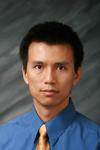Cited By
View all- Marakkalage DDe Micheli G(2024)Fanout-Bounded Logic Synthesis for Emerging TechnologiesIEEE Transactions on Computer-Aided Design of Integrated Circuits and Systems10.1109/TCAD.2023.333944043:5(1415-1428)Online publication date: May-2024
- Marakkalage DDe Micheli G(2023)Fanout-Bounded Logic Synthesis for Emerging Technologies - A Top-Down Approach2023 Design, Automation & Test in Europe Conference & Exhibition (DATE)10.23919/DATE56975.2023.10137314(1-6)Online publication date: Apr-2023
- Zhang HJiang J(2020)SFO: A Scalable Approach to Fanout-Bounded Logic Synthesis for Emerging Technologies2020 57th ACM/IEEE Design Automation Conference (DAC)10.1109/DAC18072.2020.9218500(1-6)Online publication date: Jul-2020
- Show More Cited By




